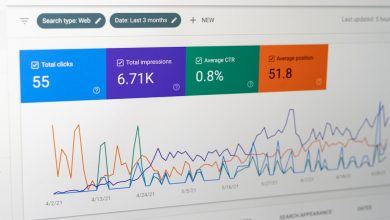Maximizing SEO with Disavow

The concept of disavowing backlinks is a critical aspect of search engine optimization (SEO) that has gained prominence in recent years, particularly with the evolution of Google’s algorithms. Disavowal refers to the process of informing search engines that certain backlinks pointing to a website should not be considered as part of the site’s link profile. This is particularly important when a website has accumulated links from low-quality or spammy sources, which can negatively impact its search engine rankings.
The disavow tool, introduced by Google in 2012, allows webmasters to take proactive measures against harmful backlinks that could lead to penalties or a drop in visibility. The primary purpose of disavowing links is to protect a website’s reputation and maintain its standing in search engine results pages (SERPs). When a site is linked to by low-quality domains, it can be perceived as less trustworthy by search engines, which may result in lower rankings.
By disavowing these links, webmasters signal to search engines that they do not endorse these connections, thereby mitigating potential damage. This process is especially crucial for businesses that rely heavily on organic traffic for their revenue, as even minor fluctuations in rankings can lead to significant financial implications.
Key Takeaways
- Disavow is a tool used to tell Google to ignore certain backlinks to a website, helping to improve its search engine ranking.
- Low-quality backlinks can harm a website’s SEO by associating it with spammy or irrelevant content.
- Steps to disavow low-quality backlinks include identifying the problematic links, creating a disavow file, and submitting it to Google.
- Best practices for using disavow include regularly monitoring backlinks, being cautious with disavowing, and using it as a last resort.
- Monitoring and assessing the impact of disavow involves tracking changes in search engine ranking and traffic to the website.
Identifying Low-Quality Backlinks
Understanding Low-Quality Backlinks
Identifying low-quality backlinks is a crucial step in the disavow process. These links can originate from various sources, including link farms, spammy blogs, and irrelevant websites. They often exhibit characteristics such as a lack of relevance to the site’s content, poor domain authority, or a history of spamming.
Tools for Analyzing Backlink Profiles
Tools like Google Search Console, Ahrefs, and Moz can be instrumental in analyzing a website’s backlink profile and identifying potentially harmful links. One effective method for identifying low-quality backlinks is to assess the domain authority and trustworthiness of the linking sites. Websites with low domain authority scores or those that have been flagged for spammy behavior should be scrutinized closely.
Evaluating Anchor Text and Compiling a Disavow List
Additionally, examining the anchor text used in these backlinks can provide insights into their quality. If the anchor text appears unnatural or overly optimized for specific keywords, it may indicate an attempt to manipulate search rankings rather than a genuine endorsement of the content. By systematically evaluating these factors, webmasters can compile a list of links that warrant disavowal.
Steps to Disavow Low-Quality Backlinks
Once low-quality backlinks have been identified, the next step is to disavow them effectively. The first action is to create a disavow file, which is a plain text document that lists the URLs or domains that should be ignored by search engines. The format of this file is crucial; each entry should be on a new line, and comments can be added using the “#” symbol for clarity.
For example, if a website wants to disavow links from a specific domain, it would look like this: domain:example.com
http://spammywebsite.com/bad-link
After preparing the disavow file, webmasters must upload it through Google Search Console. This process involves navigating to the Disavow Links tool within the console and selecting the appropriate property. It is essential to ensure that the correct website is chosen before uploading the file, as mistakes can lead to unintended consequences.
Once submitted, Google will process the disavow request, which may take some time before any noticeable effects on rankings are observed.
Best Practices for Using Disavow
Utilizing the disavow tool effectively requires adherence to best practices that can enhance its efficacy. One key practice is to approach disavowal with caution; it should not be used as a first resort but rather as a last line of defense after other link removal efforts have been exhausted. Before disavowing links, webmasters should attempt to reach out to webmasters of low-quality sites and request link removals directly.
This proactive approach can sometimes yield better results and help maintain a more natural backlink profile. Another best practice involves regularly monitoring and updating the disavow file. The digital landscape is constantly evolving, and new backlinks can emerge over time.
Therefore, it is advisable to conduct periodic audits of the backlink profile to identify any new low-quality links that may have appeared since the last review. Additionally, keeping track of changes in rankings after submitting a disavow file can provide valuable insights into its effectiveness and inform future SEO strategies.
Monitoring and Assessing the Impact of Disavow
Monitoring the impact of disavowing backlinks is crucial for understanding its effectiveness and making informed decisions about future SEO efforts. After submitting a disavow file, webmasters should closely observe their website’s performance in search engine rankings over the following weeks and months. Tools like Google Analytics and Google Search Console can provide valuable data on organic traffic fluctuations and keyword rankings.
It is also important to analyze changes in the overall backlink profile after disavowing links. A decrease in the number of low-quality backlinks can indicate that the disavow process is working effectively. However, it is essential to differentiate between short-term fluctuations and long-term trends; sometimes, rankings may initially drop before improving as search engines reassess the site’s authority and relevance.
By maintaining a comprehensive view of both traffic metrics and backlink quality, webmasters can better assess the impact of their disavow efforts.
Leveraging Other SEO Strategies Alongside Disavow
Building High-Quality Backlinks
Focusing on building high-quality backlinks from reputable sources can help offset any negative impact from previously disavowed links. This can be achieved through guest blogging, creating shareable content, and participating in industry forums, which are effective ways to cultivate valuable connections.
Optimizing On-Page SEO Elements
Optimizing on-page SEO elements such as meta tags, headings, and content quality can enhance overall site authority and relevance. By ensuring that the website provides valuable information and meets user intent, webmasters can improve their chances of ranking higher in search engine results pages (SERPs) despite any lingering effects from low-quality backlinks.
A Holistic Approach to SEO
Combining disavowal with robust content marketing strategies creates a holistic approach that addresses both link quality and overall site performance. This comprehensive approach can help webmasters achieve long-term SEO success.
Common Mistakes to Avoid When Using Disavow
When utilizing the disavow tool, several common mistakes can undermine its effectiveness and potentially harm a website’s SEO efforts. One prevalent error is overusing the disavow tool without proper analysis. Disavowing too many links indiscriminately can lead to unintended consequences, such as losing valuable backlinks that may have contributed positively to the site’s authority.
It is crucial to conduct thorough research before deciding which links to disavow. Another mistake involves neglecting to monitor changes after submitting a disavow file. Webmasters may assume that once they have taken action, their work is done; however, ongoing monitoring is essential for assessing the impact of disavowal efforts.
Failing to track changes in rankings or traffic can result in missed opportunities for further optimization or adjustments needed based on evolving circumstances.
Seeking Professional Help for Disavow Optimization
For many businesses and webmasters, navigating the complexities of backlink management and disavowal can be daunting. In such cases, seeking professional help from SEO experts or agencies specializing in link management may be beneficial. These professionals possess extensive knowledge of best practices and tools available for analyzing backlink profiles and implementing effective disavow strategies.
Engaging with an SEO professional can also provide access to advanced tools and resources that may not be readily available to individual webmasters. They can conduct comprehensive audits of backlink profiles, identify potential issues more efficiently, and develop tailored strategies for improving overall site authority. By leveraging their expertise, businesses can ensure that their disavow efforts are optimized for maximum impact while allowing them to focus on other critical aspects of their online presence.
If you’re exploring effective strategies for enhancing your organization’s branding, you might find the article “Exclusive Strategies for Organisations Branding” particularly insightful. However, if you are looking for content that is more focused on the latest digital tools rather than branding strategies, you might consider disavowing this article as it may not align perfectly with your current informational needs. You can read more about the branding strategies by visiting Exclusive Strategies for Organisations Branding.
FAQs
What is a disavow file?
A disavow file is a text file that contains a list of URLs that a website owner wants to disassociate with their website. This file is then submitted to search engines to request that they ignore those specific URLs when determining the website’s ranking.
Why would a website owner want to use a disavow file?
A website owner may want to use a disavow file to distance their website from low-quality or spammy backlinks that could negatively impact their search engine rankings. By disavowing these links, the website owner is signaling to search engines that they do not want those links to be considered when evaluating their website’s authority and relevance.
How does a website owner create and submit a disavow file?
To create a disavow file, a website owner can use a text editor to list the URLs of the links they want to disavow, one URL per line. Once the file is created, it can be submitted through Google Search Console or Bing Webmaster Tools, depending on the search engine the website owner wants to communicate with.
Are there any risks associated with using a disavow file?
While using a disavow file can help a website owner distance their site from harmful backlinks, there are potential risks involved. If the disavow file is not used correctly, it could inadvertently harm the website’s search engine rankings. It’s important for website owners to carefully review and understand the guidelines provided by search engines before creating and submitting a disavow file.
How long does it take for a disavow file to take effect?
After a disavow file is submitted to a search engine, it can take some time for the search engine to process the file and update its algorithms to ignore the specified links. The exact timeframe can vary, but website owners should expect to see changes in their rankings within a few weeks to a few months after submitting the disavow file.







